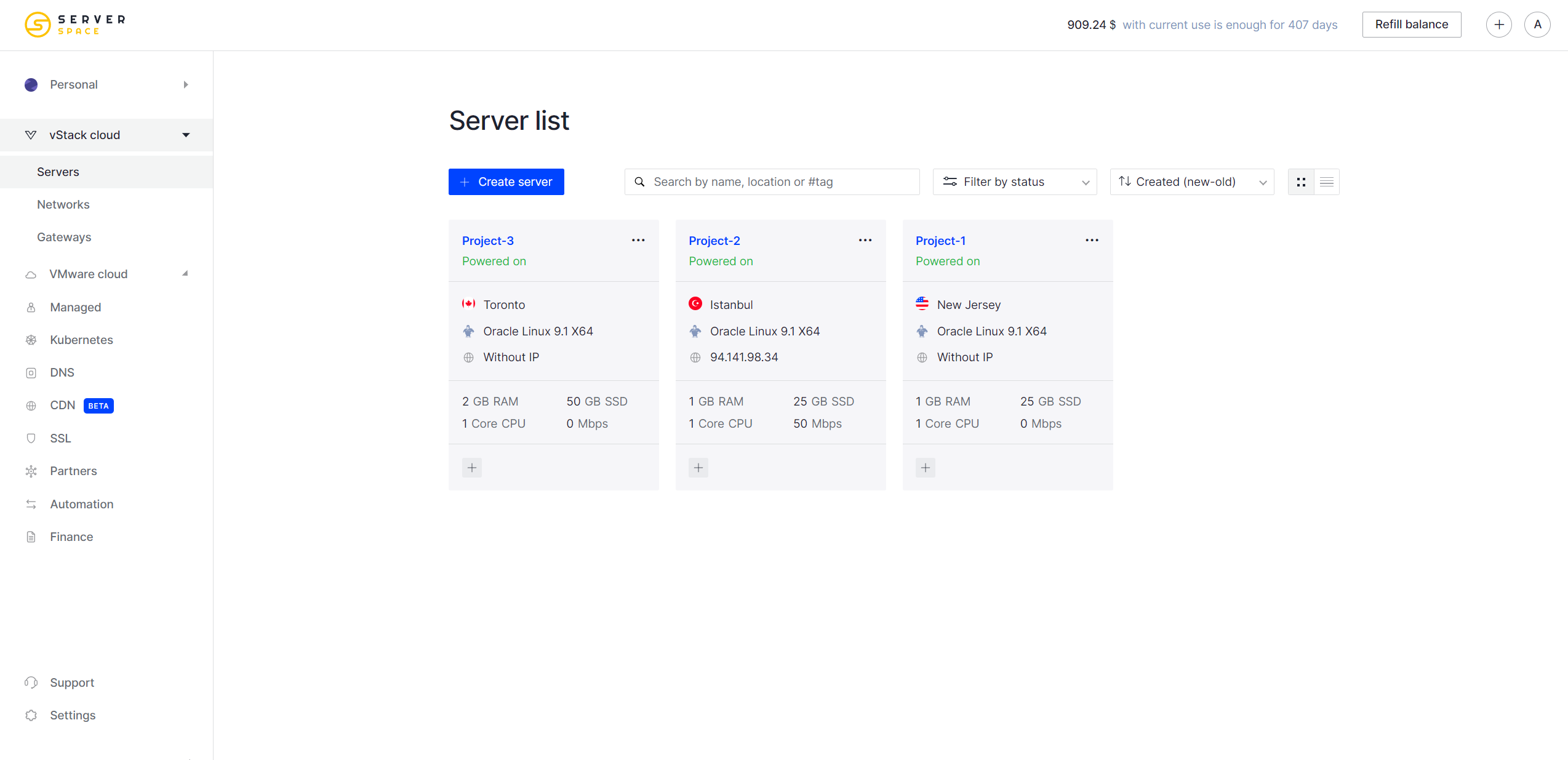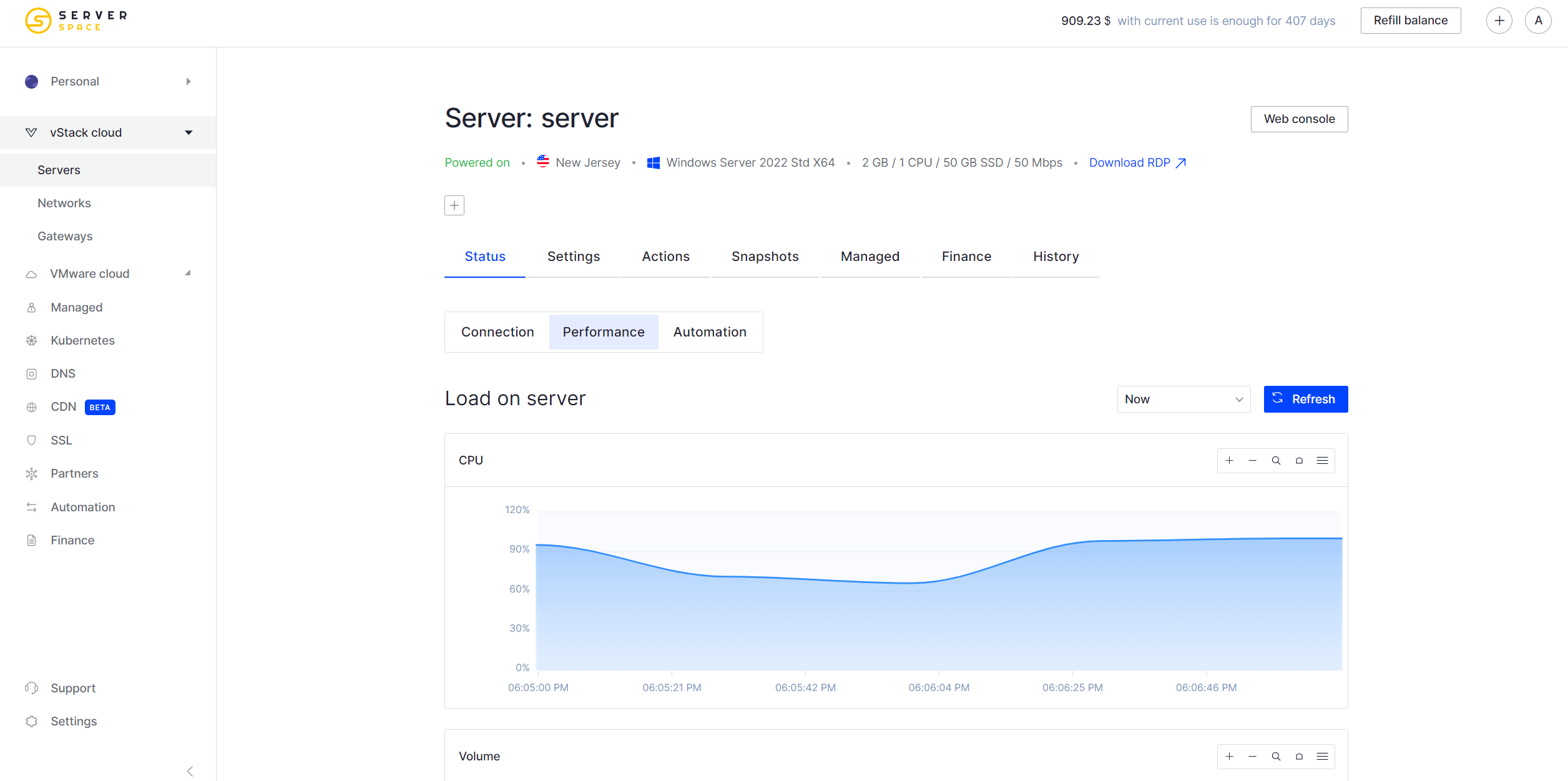
User-friendly interface
Our control panel has the necessary tools to monitor the state of your infrastructure and comfortably manage your application. Any problem is solved within the panel through the ticketing system.
Set up a LAMP server stack to power dynamic websites and web applications efficiently.
You are not tied to rates and can rent any cloud server configuration.
Spin up your LAMP servers in 40 sec, without long setups and boring docs to read.
Service charges every 10 minutes. You pay only for the servers you use.
Run your servers globally. We have low latency and high availability network.
Explore Serverspace opportunities to grow your business.
Our control panel has the necessary tools to monitor the state of your infrastructure and comfortably manage your application. Any problem is solved within the panel through the ticketing system.
Set up your LAMP server configuration in the handy Serverspace control panel. If the default configuration does not suit you, you can customize the resources to your own needs.
Estimate costs for a project with Serverspace pricing system. Funds are charged once in every 10 minutes, allowing you to pay for servers only for their lifetime.
Get access to one of the most popular web service stacks.
Get a guarantee of protection for your project with encryption methods, regular updates, and stack security architecture.
Customize additional modules and use open-source frameworks that reduce the time it takes to write code.
Deploy a cloud server for resources of any size. Run an additional LAMP server under increased load.
Use all LAMP features to develop your project.
What is LAMP and how does it work?
LAMP is a popular open-source software stack used to build and host dynamic websites and web applications. The acronym stands for:
• Linux — the operating system
• Apache — the web server
• MySQL — the database management system
• PHP — the server-side scripting language
Together, Linux, Apache, MySQL, and PHP form a stable, flexible stack: Linux is the foundation, Apache serves web requests, MySQL handles data, and PHP powers dynamic content - ideal for running web apps reliably.
What's the difference between LAMP and LEMP?
LAMP (Linux, Apache, MySQL, PHP) and LEMP (Linux, Nginx, MySQL, PHP) are both popular stacks for hosting dynamic websites.
Key differences:
• Web server: LAMP uses Apache; LEMP uses Nginx, which is faster and lighter.
• Performance: Nginx handles high traffic and static files better; Apache is more flexible for complex setups.
• Configuration: Apache supports .htaccess for per-directory settings; Nginx uses a centralized config.
How do I install LAMP stack on Ubuntu 20.04?
A description of how to install LAMP stack on virtual servers with Ubuntu operating system can be found in this tutorial.
How does LAMP handle dynamic content?
LAMP handles dynamic content by combining Apache, PHP, and MySQL:
• Apache receives the request and sends it to PHP
• PHP runs the server-side code and interacts with MySQL if needed
• MySQL stores and retrieves data
• PHP then generates the final HTML, which Apache delivers to the user
This setup allows LAMP to serve interactive, database-driven pages instead of just static ones.

